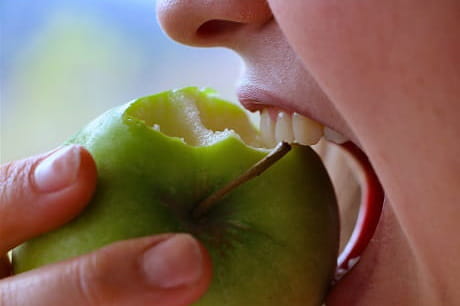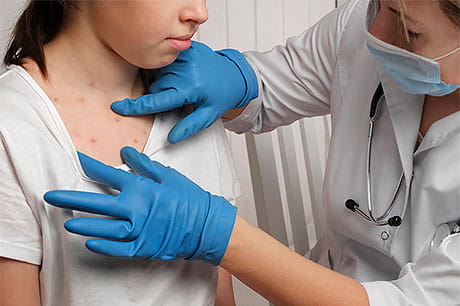Are you getting enough fiber in your diet?
The average adult needs 21 to 38 grams of fiber every day. (Most of us don’t get enough.)
When planning your meals, you probably think about a protein, a vegetable and maybe starch. But are you including enough fiber-rich options? The answer may surprise you.
“Many people only eat half the amount of fiber they need,” says Kelley Monahan, wellness associate at Geisinger.
If fiber is lacking in your diet, not to worry. Adding more is easy.
What is fiber?
Fiber is a carbohydrate found in produce and grains. And it could hardly be healthier.
“This essential nutrient contributes to health and wellness in many ways,” Monahan says. “Fiber protects against heart disease, Type 2 diabetes, colon cancer and diverticulitis.”
It comes in two types:
- Soluble fiber – This type dissolves in water.
- Insoluble fiber – This type doesn’t dissolve in water.
Benefits of eating fiber
Getting the right nutrients — in the right amounts — can make you feel your best. Adding more fiber to your diet can:
Help you “go”: A key sign your diet is low in fiber? Constipation. Boosting your fiber intake will help keep you regular. Just be sure to add it gradually so your digestive system has time to adjust. “Adding too much fiber too fast can cause diarrhea,” says Monahan.
Aid in weight loss: Eating more fiber helps you feel full longer. That means a fiber-packed breakfast — think oatmeal, whole-grain cereal or fresh fruit — may keep you full until lunchtime, so you snack less.
Control blood sugar: Fiber slows your body’s absorption of sugar. “This helps keep blood sugar levels within a healthy range, which can lower your risk of developing diabetes,” Monahan says.
Lower cholesterol: Watching your cholesterol levels? Fiber can help with that, too. Cholesterol binds to fiber and moves through your digestive system, where it leaves the body instead of entering your bloodstream.
How to get more fiber
And there’s even better news: Increasing your fiber doesn’t mean eating hay. With a few small adjustments, you can up your intake and still enjoy your meals. Some easy ways to get more fiber:
Plan your morning meal: Choose a high-fiber option like bran flakes or oatmeal for the first meal of the day. Looking for something heartier? Try scrambled eggs with spinach and a piece of fruit.
Switch to whole grains: Swap out processed white bread with whole-grain bread. Look for labels that list whole wheat flour or whole grain as the first ingredient. And check that they have at least 2 grams of dietary fiber per serving. Side dishes of brown rice, quinoa or whole wheat pasta are another great fiber boost.
Stick to whole foods: Although frozen meals and processed options may be quick and easy, they often fall short on essential nutrients, like fiber. “Typically, the more refined or processed a food is, the lower its fiber content,” Monahan says. Replacing canned or packaged foods or desserts with fresh, homemade options lets you raise your fiber quota.
Pick more produce: Fresh or frozen fruits and vegetables are a good source of fiber, so add them to meals and snacks throughout the day. Not sure where to start? Consider adding these high-fiber accompaniments to your plate:
- Leafy greens like spinach or kale
- Cauliflower
- Avocado
- Apples
- Berries
- Oranges
Load up on legumes: Legumes are the unsung heroes that can add more fiber to any meal. Dress up a soup or salad with peas, beans or lentils.
Snack smart: When a hunger pang hits, it may be tempting to hit the kitchen for a treat. Instead of reaching for the junk food, consider noshing on these fiber-filled snacks:
- Nuts
- Dried or fresh fruit
- Raw veggies
- Hummus
- Edamame
- Popcorn
Add a fiber supplement: Having trouble getting enough fiber in your diet? A fiber supplement can help. You can find them at most stores and online. They’re available in a variety of forms, like:
- Powder
- Gummies
- Capsules
- Chewable tablets
Another tip — Don’t forget the H2O. While water itself doesn’t contain fiber, it acts as a sort of “assistant” to it. “Fiber works best when it absorbs water,” says Monahan.
If you want to be sure your diet has enough fiber, start by talking to your healthcare provider. They can help you customize a diet plan that gives you the right amount of nutrition you need.
Next steps:
7 foods that make you “go”
Does your diet include these 5 “untrendy” foods?
Want to get healthier? Look no further than your digital assistant.





